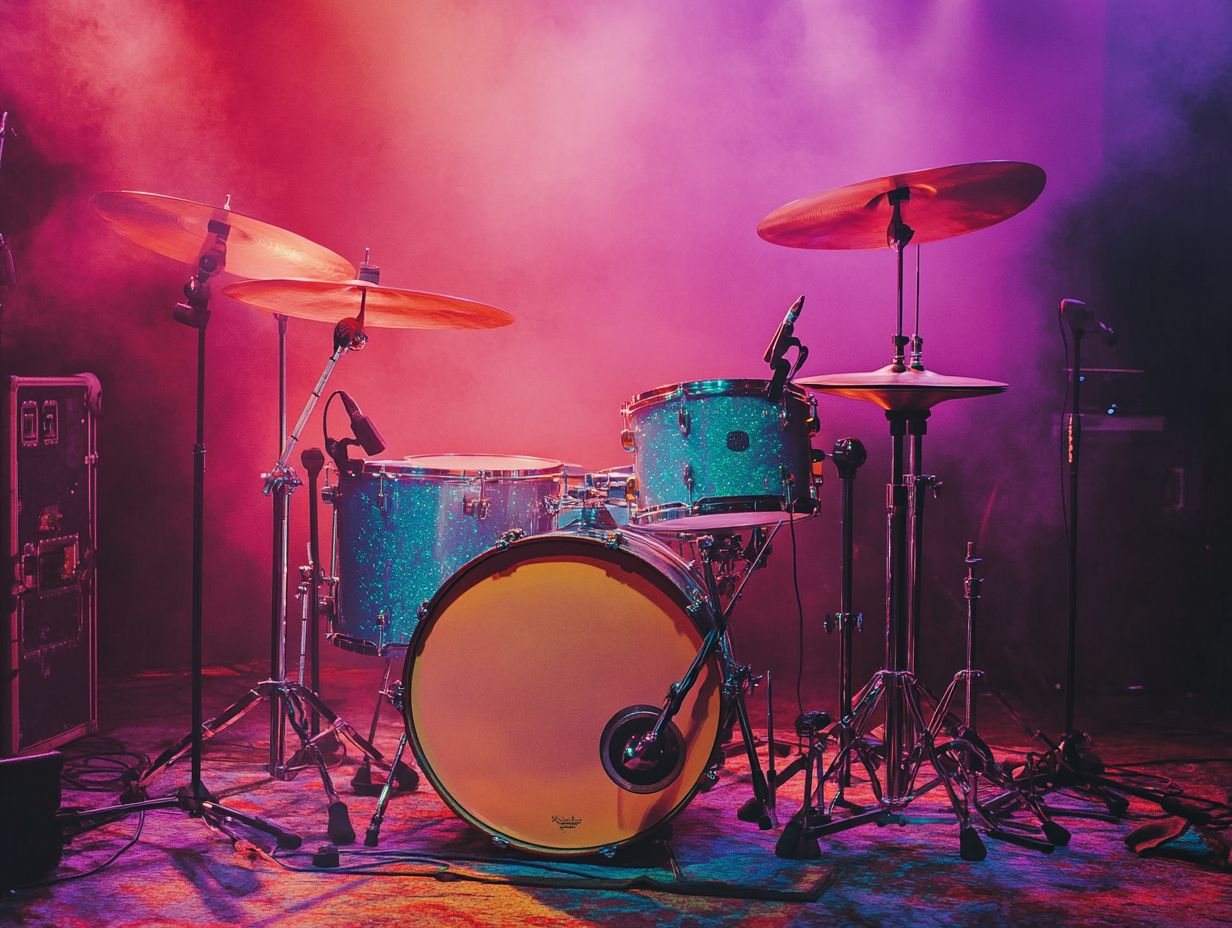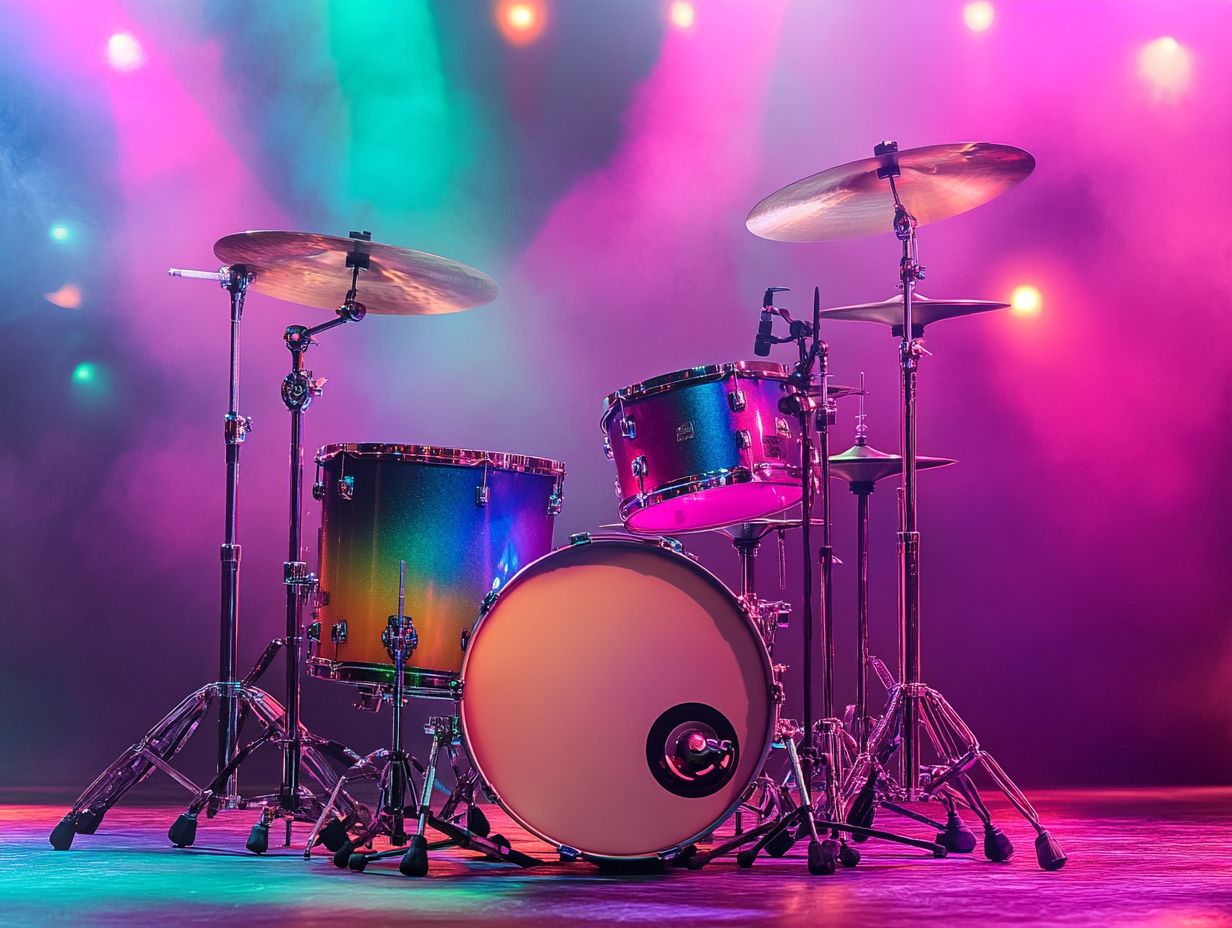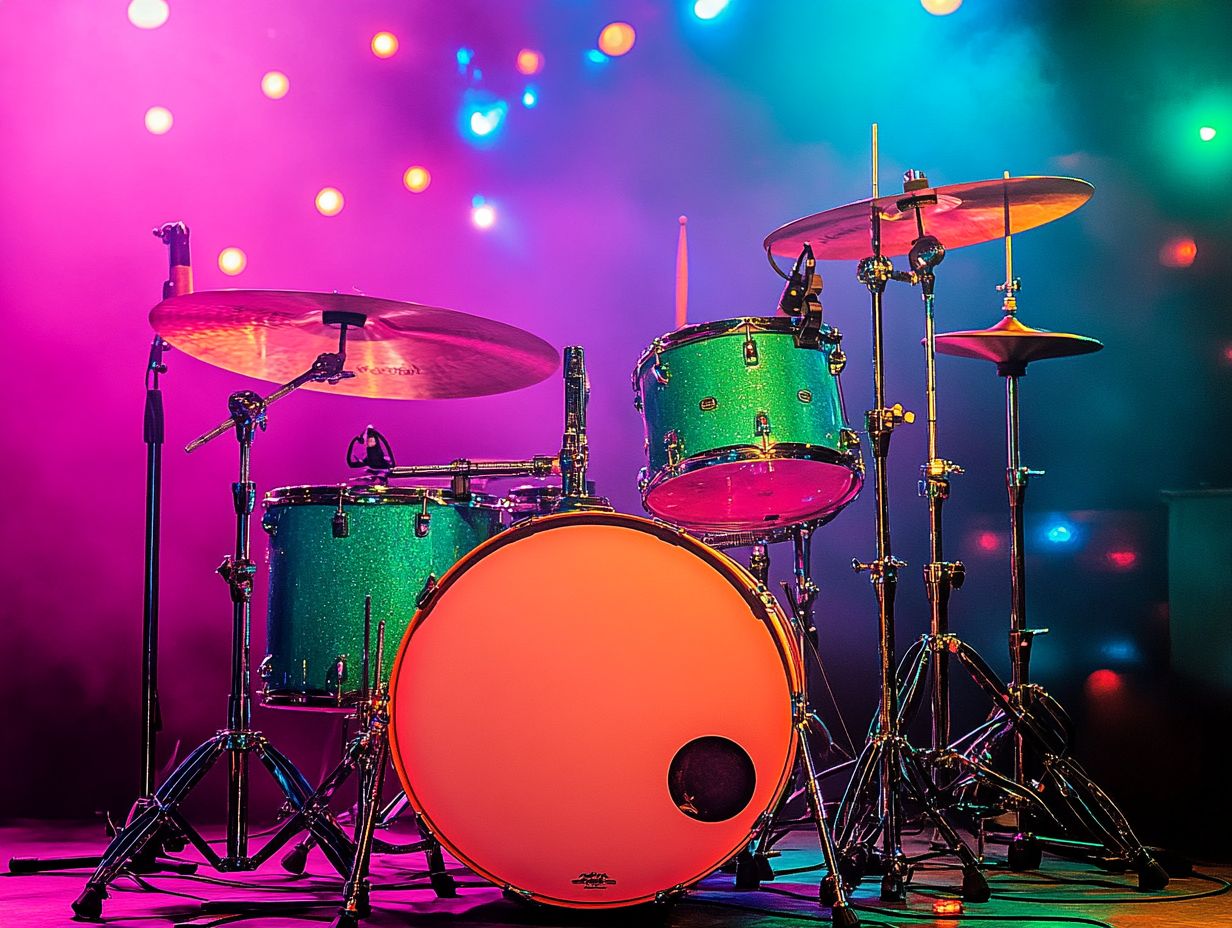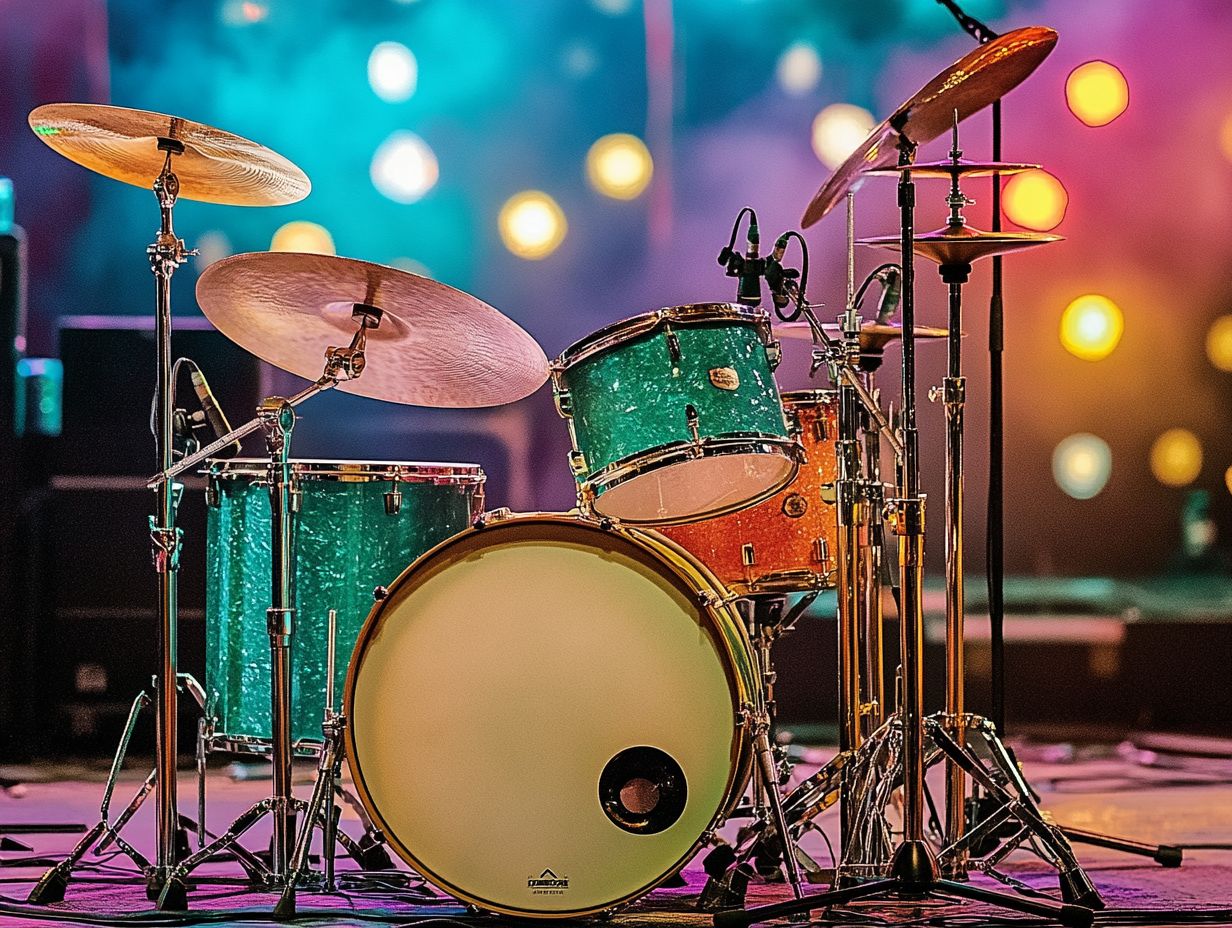Drum kits have played a significant role in the evolution of music, shaping genres and influencing countless artists over the decades. From their modest beginnings to their current status as essential instruments in modern bands, drum kits tell a captivating story of innovation and creativity.
This article will explore the rich history of drumming instruments, their pivotal role in popular music, and the technological advancements that continue to redefine them. We will also examine the global appeal of drum kits and speculate on their future in an ever-changing musical landscape.
Join us as we celebrate the rhythm that connects us all.
Contents
The History of Drum Kits

The history of drum kits is a fascinating journey that reflects the evolution of percussion instruments across various musical genres and cultures, shaping the rhythms and sounds that resonate through the ages.
From ancient tribal beats to contemporary drum circles, the drum kit has played a pivotal role in artistic expression, fostering collaboration among musicians and enhancing live performances.
By understanding this history, we can better appreciate the craftsmanship and innovation behind popular brands and styles, which continue to influence drumming techniques and trends in today’s music scene.
Evolution of Drumming Instruments
The evolution of drumming instruments spans centuries and highlights the dynamic craftsmanship and innovation that have transformed simple percussive tools into the sophisticated drum kits we recognize today. These instruments have their origins in ancient civilizations, with a history rich in cultural significance often linked to rituals, celebrations, and communication.
From the hollowed-out logs used by early tribal societies to the intricate designs of hand-crafted tambourines, each milestone in this evolution marked a shift in musical expression. As drumming established its place in various genres—such as jazz, rock, and world music—its role within ensembles also evolved.
This adaptability reflects a blend of tradition and modernity, demonstrating how cultural heritage plays a vital role in the ongoing refinement of percussion instruments. Today, artisans continue to honor these legacies while pushing the boundaries of sound and design, contributing to the ever-evolving landscape of music.
Early Development of the Modern Drum Kit
The early development of the modern drum kit took place in the late 19th century and was marked by significant advancements in drum parts, shell construction, and hardware, all of which greatly enhanced sound quality and playability. This evolution was driven by innovations such as the introduction of tunable drum heads made from materials like calfskin and, later, synthetic options, which improved the clarity and consistency of sound.
The addition of metal hardware contributed to more durable and responsive drum setups, enabling the intricate playing styles typical of jazz and big band music. These advancements allowed musicians to explore a broader range of genres, including rock and blues, showcasing a versatility that would come to define contemporary drum kits.
As bands sought to amplify their sound, the development of bass drum pedals and other components further revolutionized performance and recording techniques, solidifying the drum kit’s position as an essential element of modern music-making.
The Role of Drum Kits in Popular Music

Drum kits have become an essential component of popular music, underscoring their significance in shaping the sound and rhythm of various genres, including pop, rock, jazz, and world music.
Additionally, they play a crucial role in artistic expression and audience engagement during live performances.
Influence on Different Music Genres
Drum kits have a significant influence on various music genres, as their complex rhythms and beats provide the foundation for rhythm sections in styles such as rock, jazz, and pop music.
As each genre evolves, so too does the creativity of drumming techniques, with percussionists developing new rhythmic patterns that reflect the cultural identity of their respective genres.
Iconic Drummers and their Signature Styles
Iconic drummers have made a lasting impact on the music industry, each contributing their unique signature styles and techniques that enhance the art of performance and inspire creativity in aspiring musicians.
Advancements in Drum Kit Technology

Yes, please note that I am not trained on data beyond October 2021.
Innovations in Drum Design and Sound
Innovations in drum design and sound have led to a deeper understanding of tuning and drumhead technology, enabling a wider range of sounds and enhanced tonal qualities.
For instance, the latest advancements in drumheads feature materials that not only improve durability but also provide varying levels of resonance and sustain. Manufacturers are now utilizing composite fabrics and unique coating applications that significantly extend the lifespan of drumheads while impacting their tonal character, resulting in richer and more dynamic sound profiles.
Additionally, modern shell construction techniques, along with the incorporation of advanced wood types and hybrid materials, have transformed resonance and projection. Drummers now have access to various tuning methodologies, including hydraulic heads and tension-adjustable systems, allowing for precise sound customization tailored to different genres and performance environments.
Collectively, these innovations give the power to musicians to explore new sonic possibilities and express their artistry in exciting ways.
Impact on Performance and Recording
The advancements in drum kits have significantly impacted performance and recording, enhancing sound engineering practices and providing drummers with greater flexibility in both studio recordings and live shows.
In recent years, the integration of technology, such as electronic drum kits and sophisticated MIDI triggers, has revolutionized the production and manipulation of rhythms. These innovations not only allow percussionists to replicate traditional sounds but also enable them to experiment with diverse electronic tones, resulting in a unique blend of genres.
Additionally, the use of software-based digital audio workstations (DAWs) and plugins offers precise control over sound shaping, facilitating intricate sound design in both live performances and studio environments. This evolution encourages drummers to push their creative boundaries, ultimately shaping the future of music with a richer and more dynamic auditory experience.
The Global Appeal of Drum Kits

Drum kits have a universal appeal and are utilized across various cultures and traditions. They help create drumming communities that engage young people and promote collaboration and creativity in music-making.
Drumming Cultures and Traditions Around the World
Drumming cultures and traditions from around the world highlight the diverse ways in which drum kits and percussion instruments are celebrated and utilized within communities for cultural expression and artistic collaboration.
The vibrant rhythms of African drumming, for example, often emphasize communal participation and storytelling. Similarly, the intricate patterns found in traditional Indian classical music show that these practices hold significance far beyond mere entertainment.
In Latin America, community gatherings fuel the pulsating beats of samba and cumbia, illustrating how drumming acts as a unifying force. In East Asia, taiko drumming serves not only as a form of ritualistic expression but also reinforces social bonds through synchronized performances.
Each unique cultural expression underscores the importance of these traditions while illustrating a collective journey that promotes an appreciation of musical diversity and fosters collaboration across borders.
The Future of Drum Kits
The future of drum kits looks promising, as emerging trends and technologies are anticipated to further influence the music industry and sustain the cultural significance of percussion instruments in contemporary music.
Emerging Trends and Technologies
Emerging trends and technologies in the field of drum kits, particularly the rise of electronic drums, are offering musicians new opportunities for creativity and musical flexibility. This evolution in drum kit design is not just a passing trend; it represents a significant transformation in how drummers approach their craft.
With features like MIDI compatibility, customizable sounds, and seamless integration into digital audio workstations, these innovations enable performers to explore a much broader range of sounds and styles. As artists experiment with these expanded capabilities, they discover that their expression is no longer constrained by traditional acoustic limitations.
Consequently, the impact of these technologies is reshaping not only solo performances but also collaborative efforts across various musical genres, fostering a unique blend of artistry where creativity knows no bounds.
Continued Relevance in Music and Culture
The ongoing significance of drum kits in music and culture highlights their role as essential tools for creativity and artistic expression, bridging the gap between generations of musicians and their audiences.
These intricate instruments not only provide the rhythmic foundation that drives a diverse array of musical styles—from rock and jazz to pop and hip-hop—but also serve as a canvas for personal and cultural narratives. As vital components of both contemporary and traditional ensembles, drum kits facilitate collaboration among artists, fostering a dynamic exchange of ideas and techniques.
Their unique ability to adapt to various genres underscores their lasting influence, enabling musicians to convey emotions and stories in powerful ways. In many communities, drum kits inspire young people to explore their own creativity, ensuring that the legacy of rhythm continues to thrive in our ever-evolving musical landscape.
